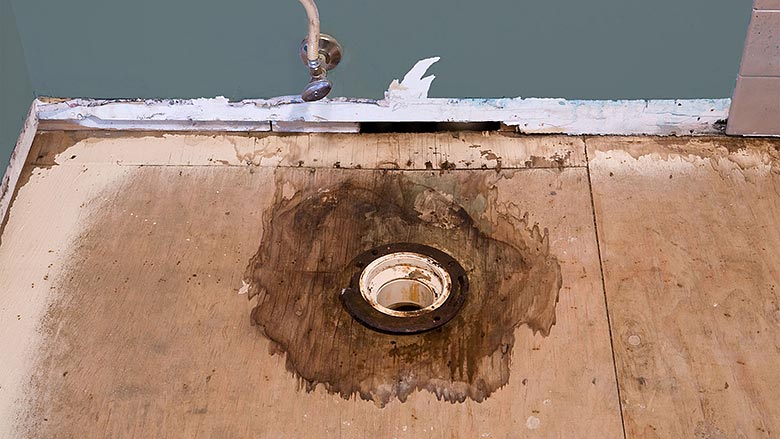Searching for Signs of Water Damage in the Bathroom
Searching for Signs of Water Damage in the Bathroom
Blog Article
How do you really feel with regards to Looking for Signs of Water Damage in the Bathroom?

The shower room is incredibly at risk for damp accumulation and also prospective water damages because of the frequent use water in it. This short article offers basic inspection strategies to assist detecting water damage hazards.
The regular use of water in the shower room makes it extremely prone for moist buildup and possible water damage. By checking it routinely, you can minimize water related problems.
The following collection of inspections is simple to do and must be done once in every 3 months in order to maintain your restroom healthy and to prevent prospective water problems triggered by the tub, the shower, pipeline joints as well as plumbing, sinks, cupboards, and also the bathroom
Do not disregard performing these evaluations and also be comprehensive while doing them. Keep in mind that these easy examinations can save you a lot of cash by providing early signs for water damages
Bathtub as well as Shower
The shower and also bathtub need special focus and maintenance. Inspect the floor tiles and replace if split. See to it that there is no missing grout in between the floor tiles. Inspect as well as change fractured caulking at joints where the walls satisfy the flooring or the bath tub. Clogged drains as well as pipelines troubles will certainly prevent the tub from drying out and also might indicate serious issues underneath the bath tub. Seek advice from a specialist immediately to prevent structural damage. Focus on stainings or soft locations around the bath tub wall surfaces as they might show an internal leak.
Plumbing
Signs for water damage are hard to discover considering that a lot of pipelines are mounted inside the wall surfaces.
Pay unique focus to floor covering and also wall surfaces moisture as well as discolorations as they might show an unnoticeable plumbing issue. Inspect wetness degrees in adjacent areas as well.
Sinks and Cabinets
Sinks and cupboards are subjected to wetness as well as moisture day-to-day and also are often overlooked. Inspect frequently under the sink and on the counter top above it. Repair any type of drip in the trap as it may suggest drain issues. Browse the sink, sluggish draining pipelines might suggest a blocked drain. Replace sink seals if they are broken or loose.
The Bathroom
The bathroom is a susceptible water junction. Check the water lines and search for leaks around the toilet seat, in the hose, and also under the water container. If you identify any kind of indicators of dampness on the flooring around the bathroom, check for leaks in the toilet rim and also container seals.
Realize that hanging bathroom bowl deodorants enhances the chances for clogs.
Water Damage Signs In The Bathroom To Avoid Cleanup
Musty smell
This is one of the easiest signs to catch because musty smells are so odorous. The damp, earthy, moldy smell should be a big red flag. The smell will develop when moisture gets trapped in surfaces, and begins to facilitate mold growth. Leaking pipes under cabinets, inside walls, and behind shower fixtures will cause moisture to stay trapped and not dry, which will lead to mold growth and spread. As soon as you notice any musty smells in your bathroom, have it checked for hidden water damage and cleanup signs.
Visible mold
If the smell isn’t there to give it away, sometimes you will actually see mold growth. Finding mold in your bathroom is a serious problem, because mold is very harmful to your health. By the time mold growth is visible, it also means that water damage has already occurred and been present for some time. The only way the mold problem can be resolved is to find the source of the moisture and get it stopped. To safely and adequately remove mold, you need to have professionals handle the remediation. Do not waste any time in getting mold problems addressed, fixed, and sanitized so that you can protect you and your family from the many respiratory symptoms caused by mold exposure.
Damaged floors
Bathroom floors should be able to withstand some exposure to water while still remaining in good condition. However, when excess exposure or water leaks occur, they will begin to damage even the most water-resistant flooring. If you notice any cracking, bubbling, staining, or warping on your bathroom floors, there is probably a water leak somewhere causing the distortion. If you notice areas of the floor have become softer, or even have a spongy feeling, there is probably damage to the subfloor. Subflooring is typically made up of plywood. When plywood is exposed to water or moisture, it will absorb it. Once it has become saturated, the weight of the excess water will cause the wood to swell and soften. Check the floors in your bathroom frequently to catch any of these sings before they lead to damaged subflooring.
Changes on walls
When water leaks behind walls, it will cause changes in the drywall. Peeling plaster, blistering paint, and soggy wallpaper are all good indicators that excess water is building up behind the wall. Water leaking behind drywall will cause it to swell and be soft to the tough. If you start to notice gaps along the trim of your walls, or where tile meets the wall, it could also be a strong indicator that there is a leak behind the wall. Any changes, distortion, or damage on the walls should be evaluated as soon as you notice it to prevent further water damage and cleanup.

Hopefully you enjoyed reading our piece on How to Prevent Bathroom Water Damage. Thanks a lot for taking a few minutes to browse our piece of content. Sharing is nice. Helping people is fun. Thanks for taking the time to read it.
Learn More Report this page